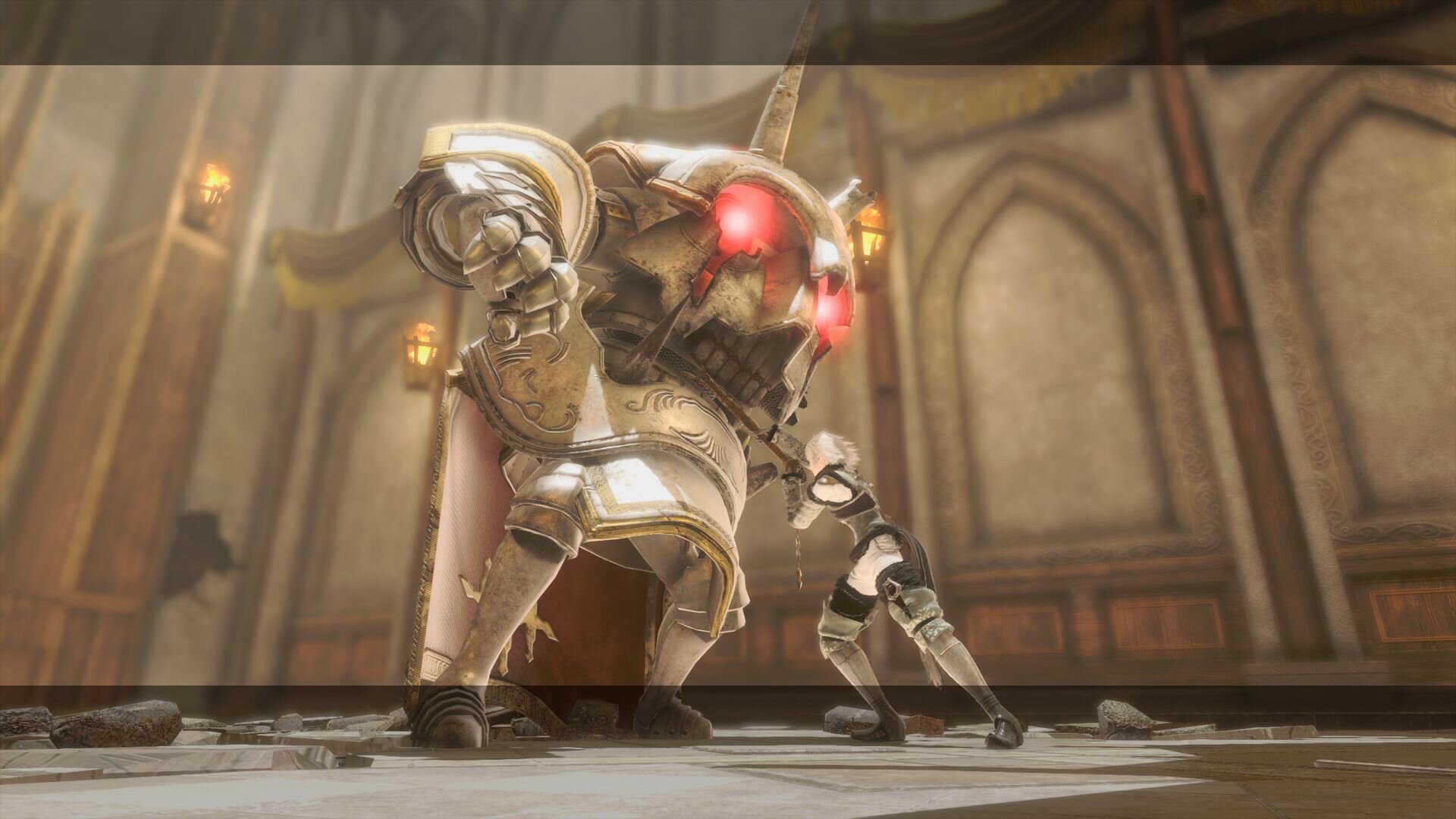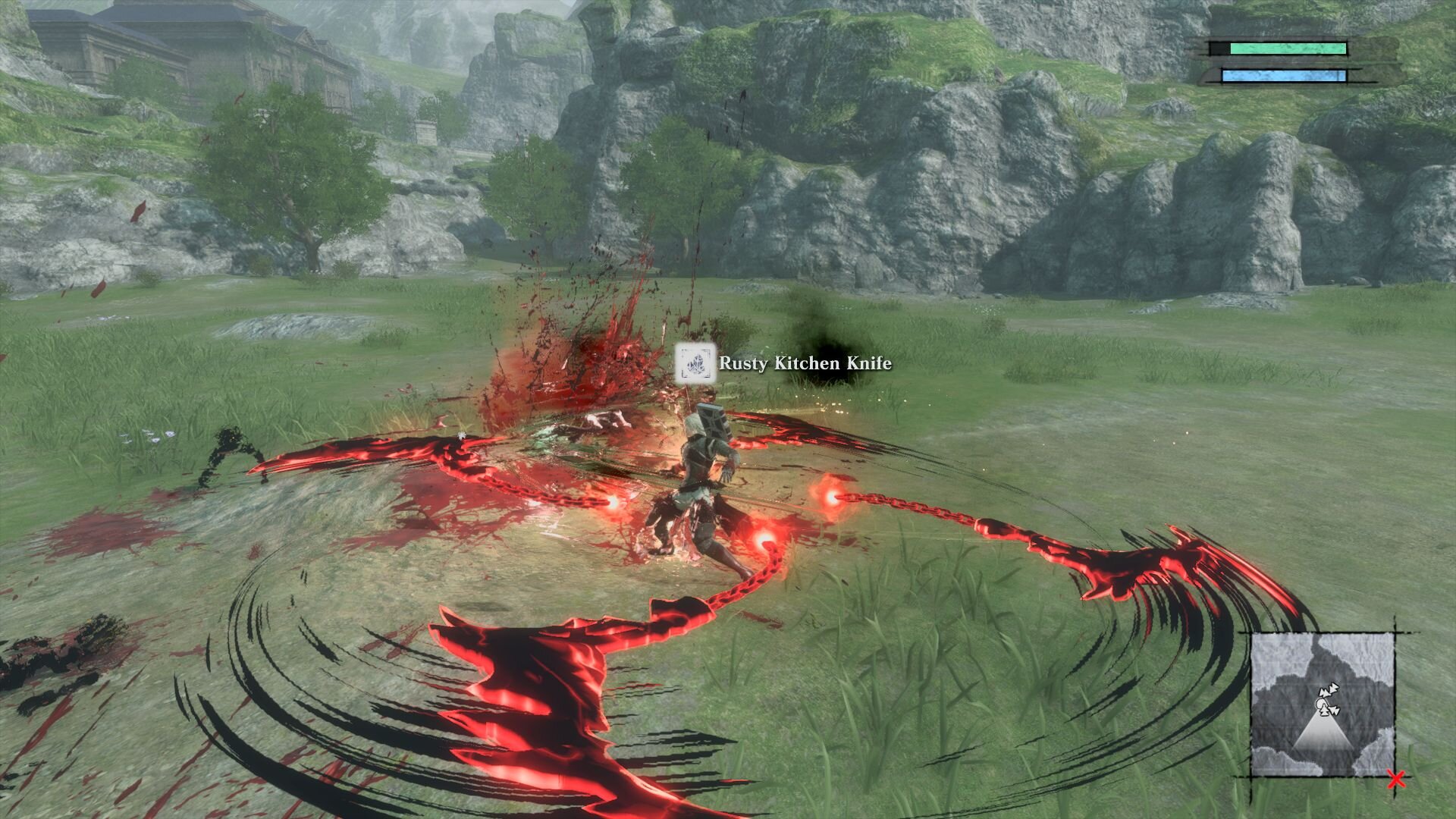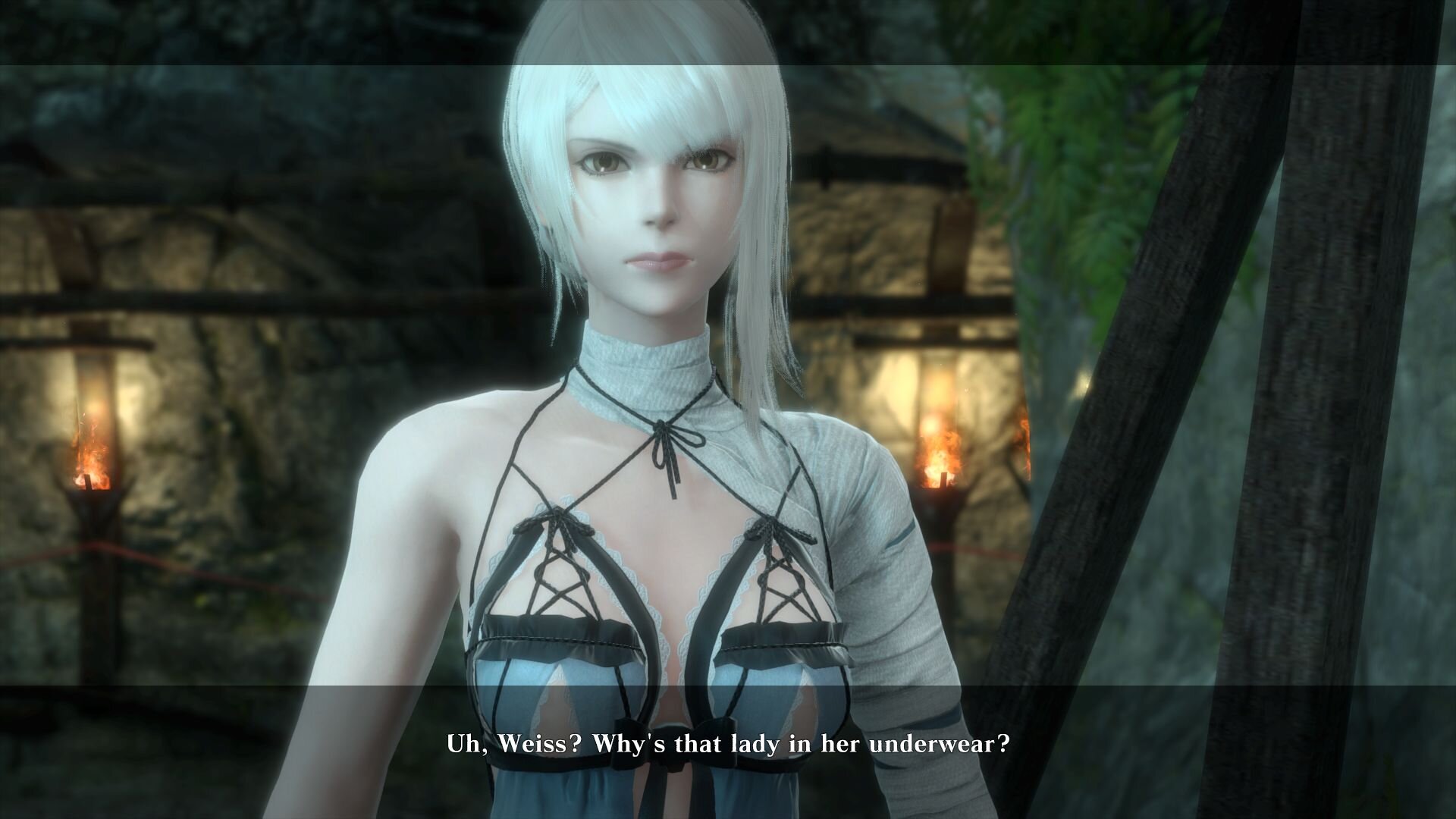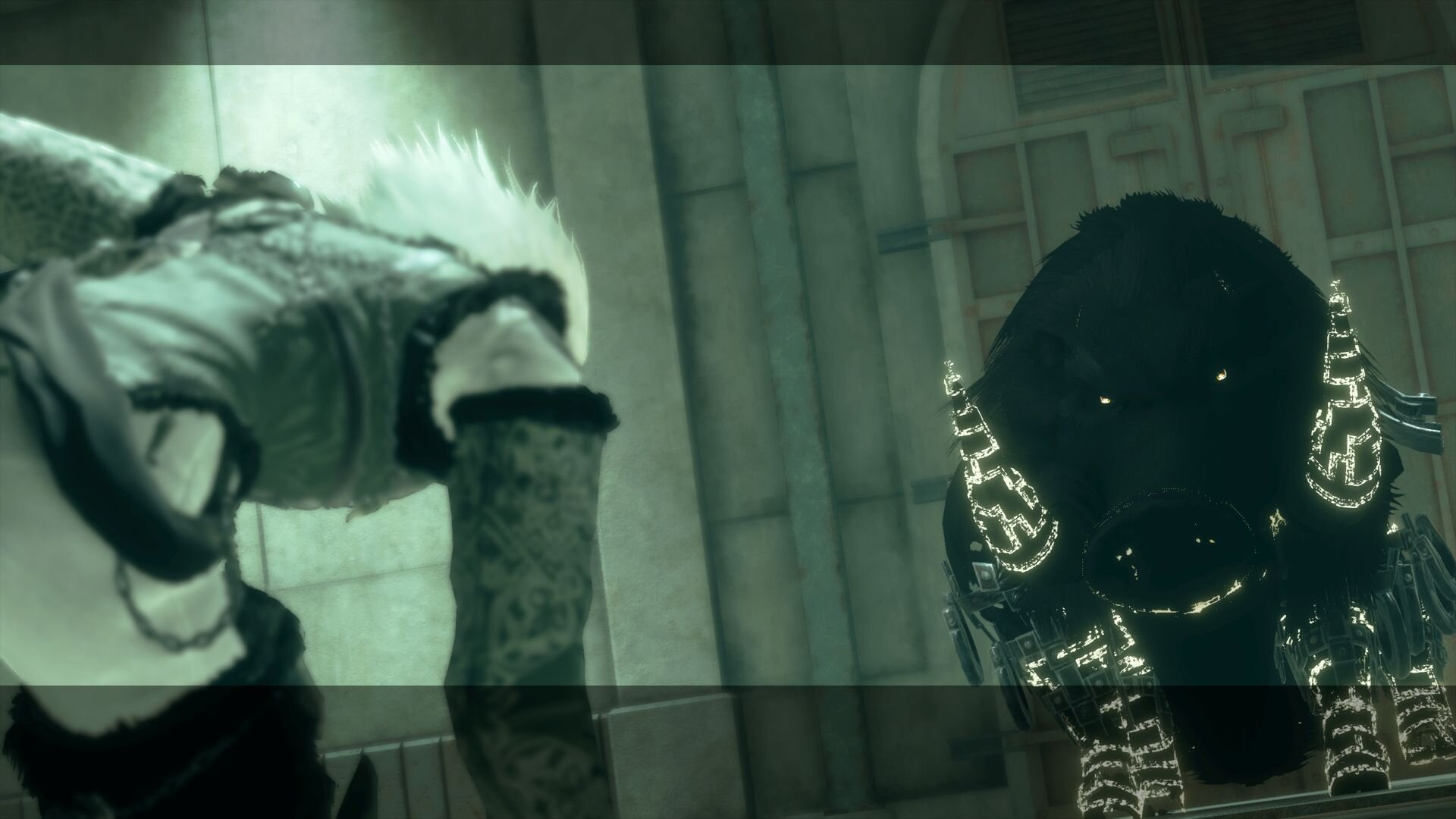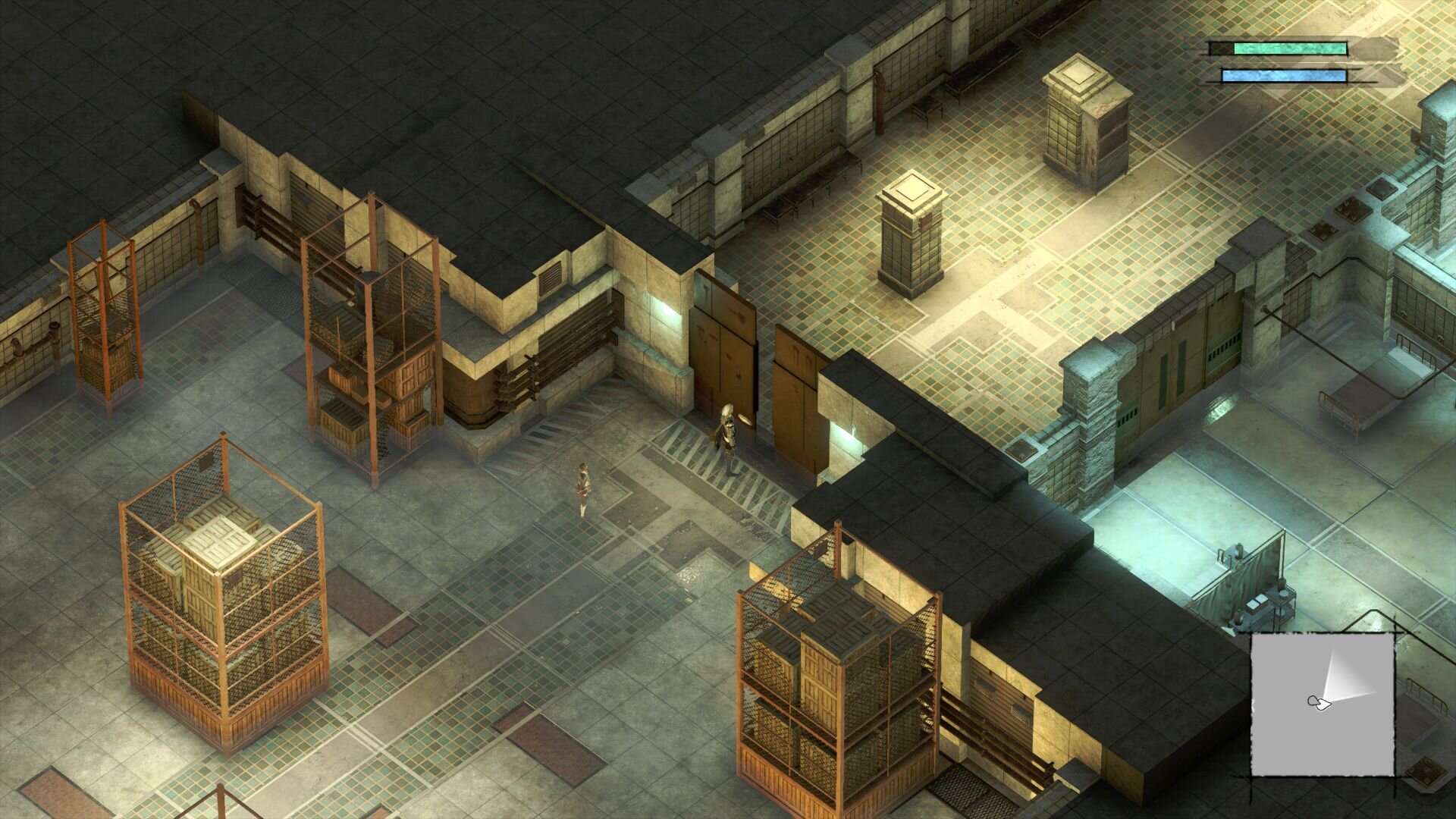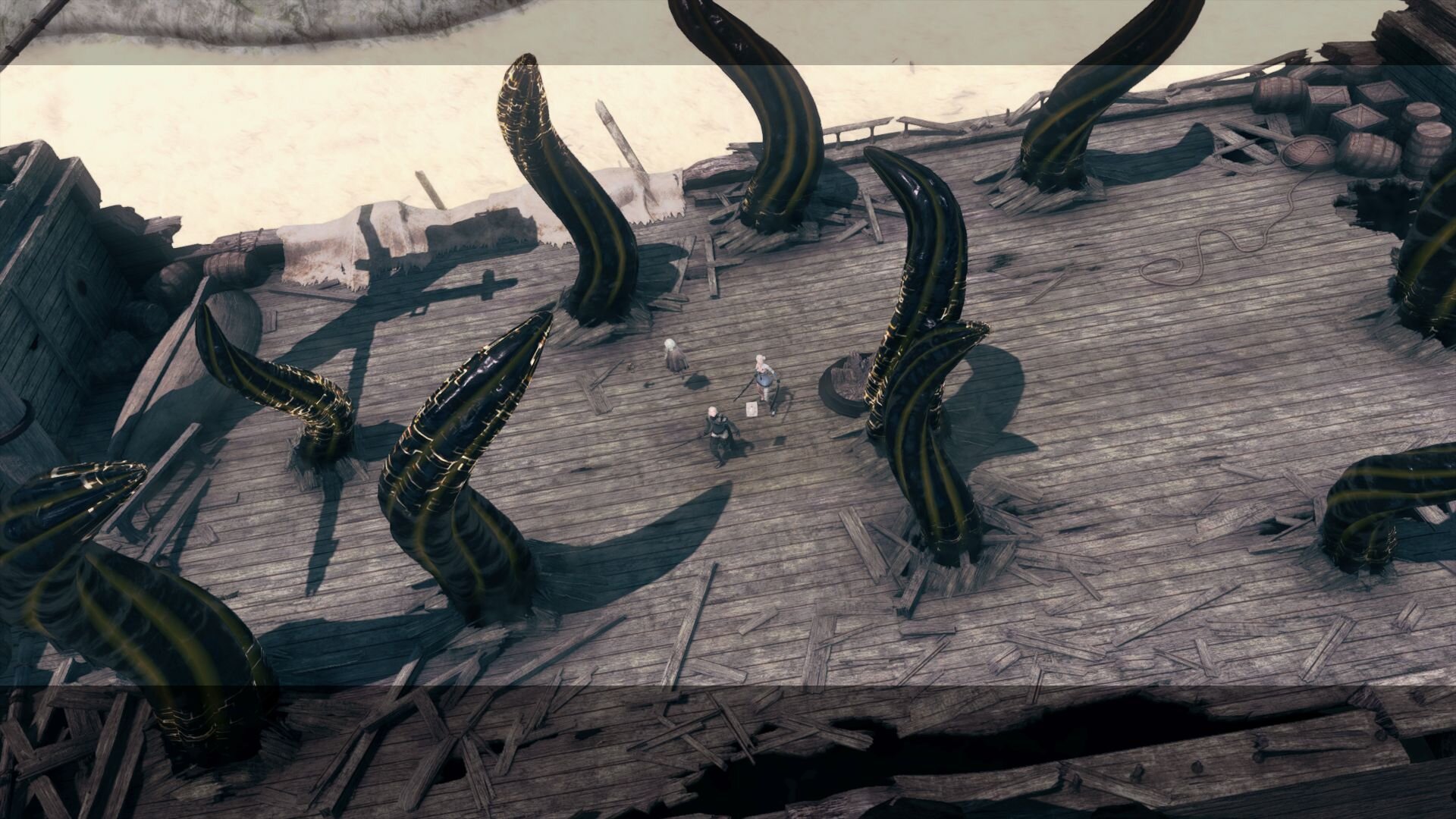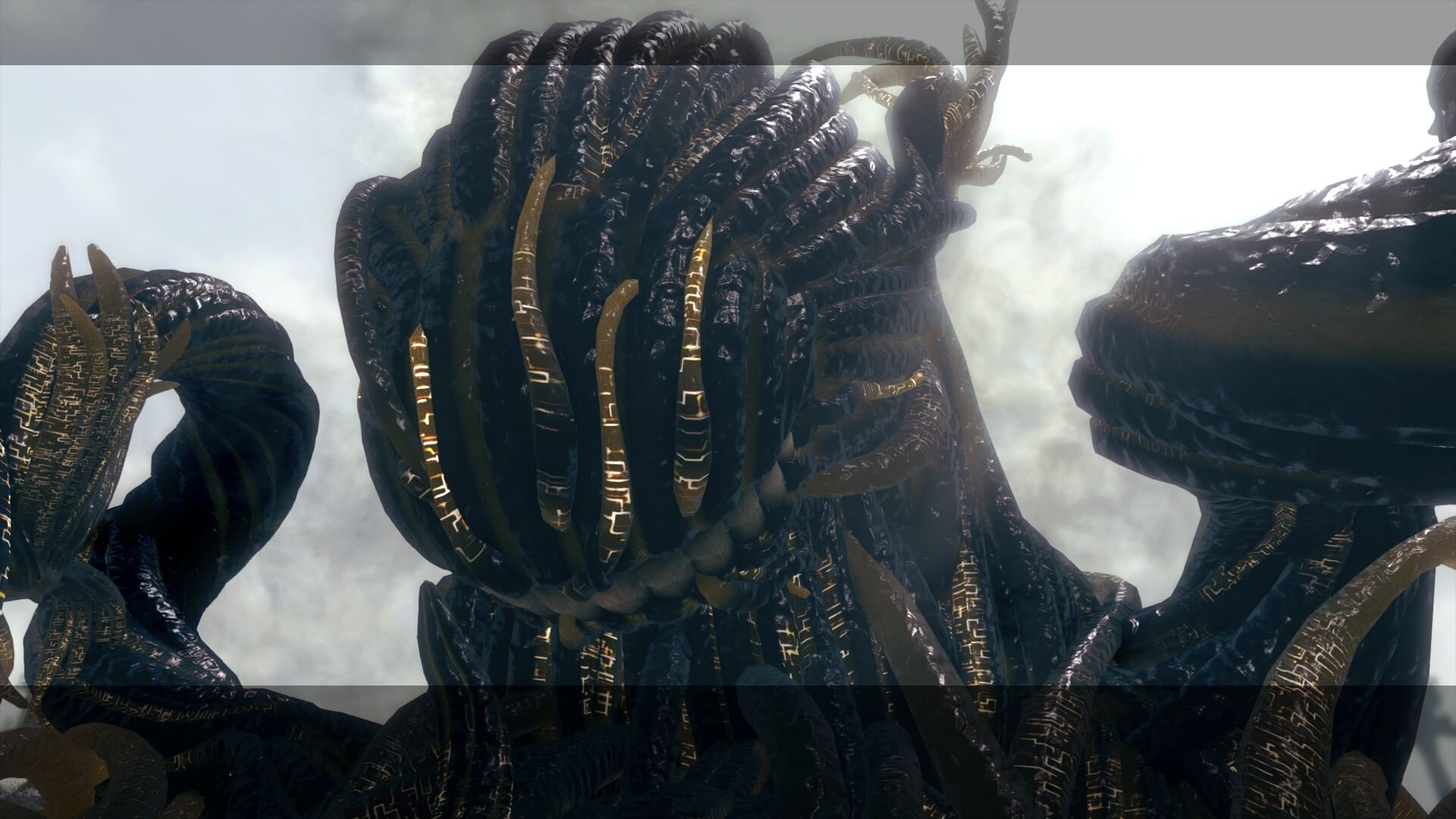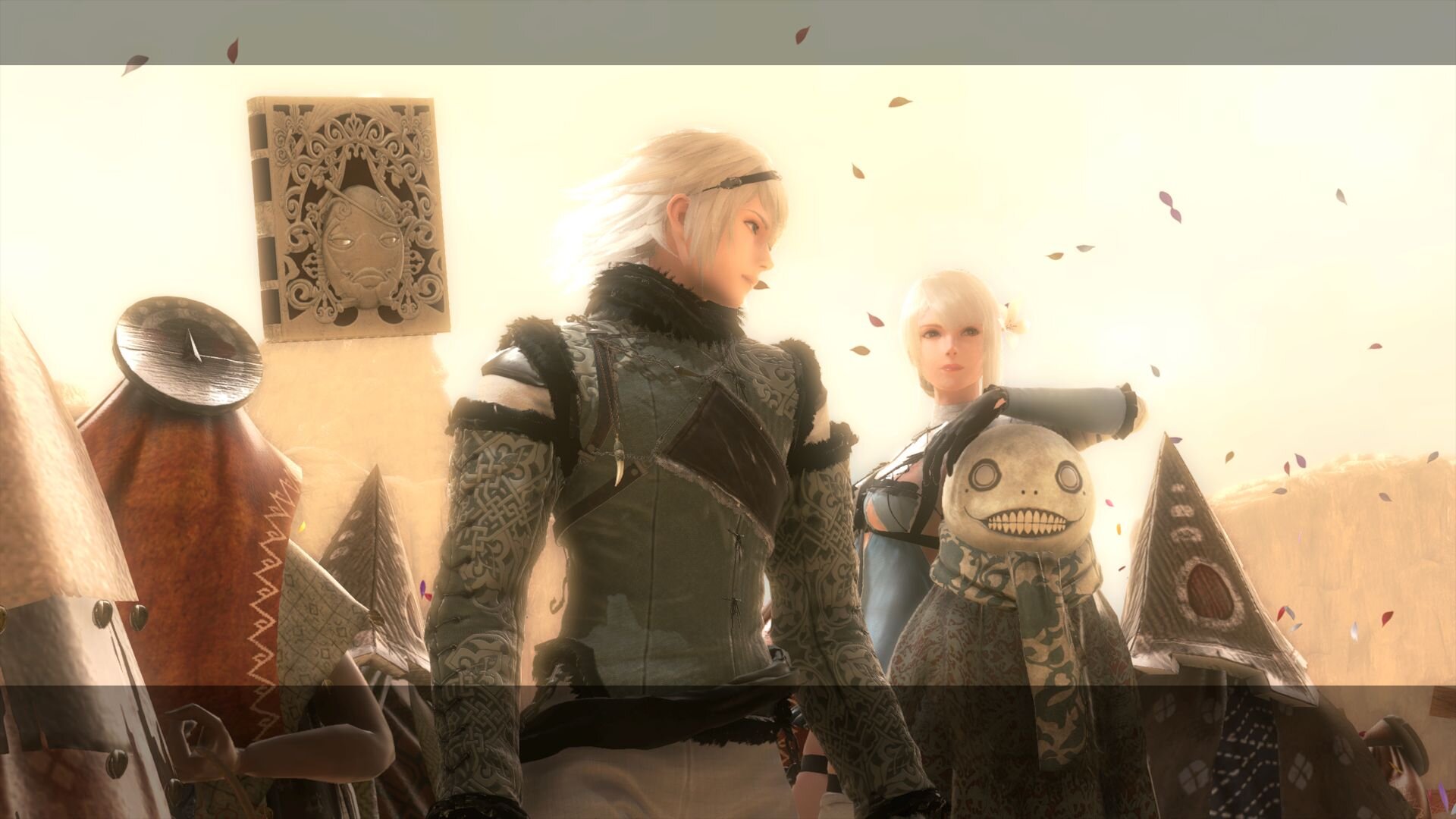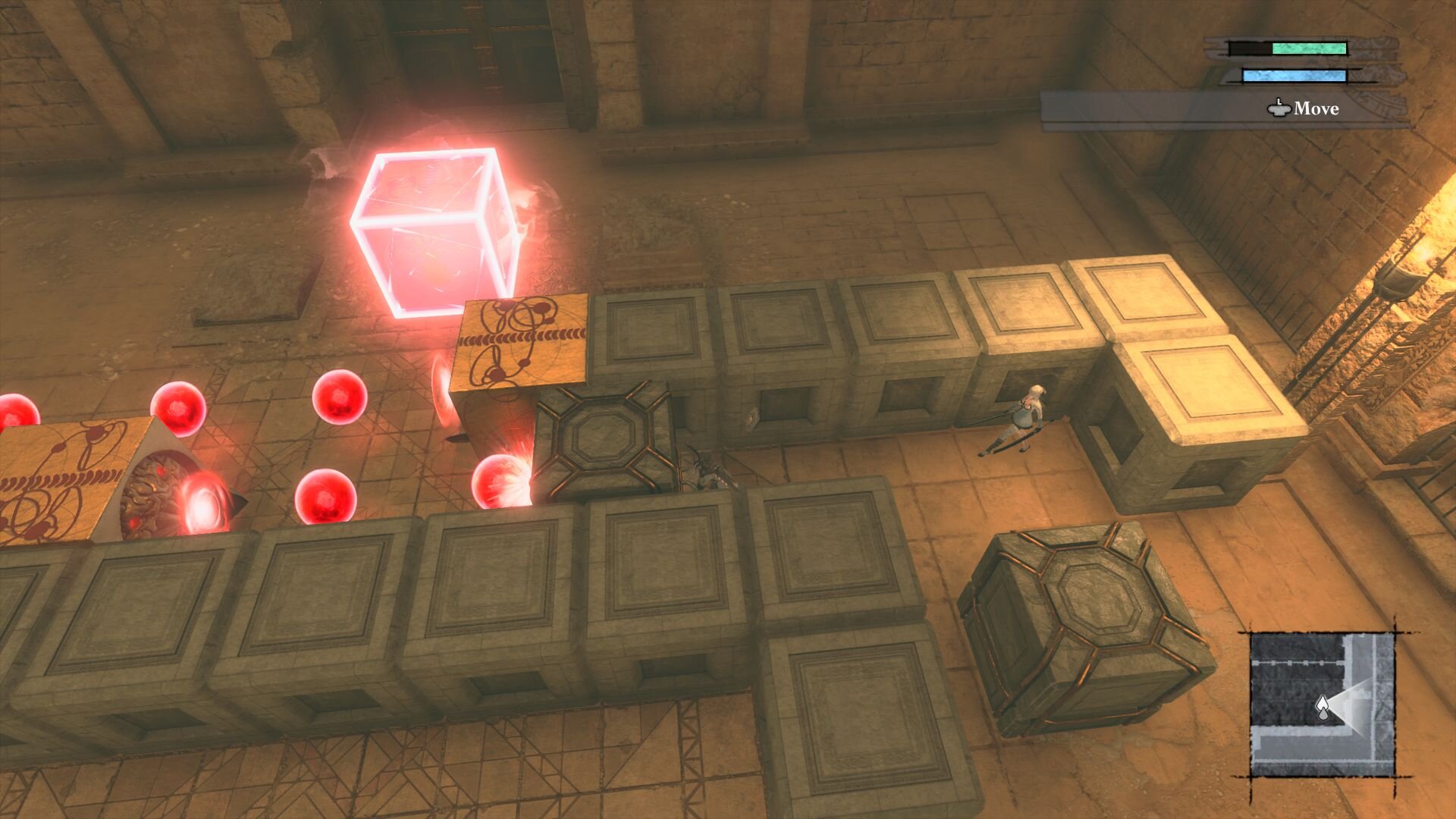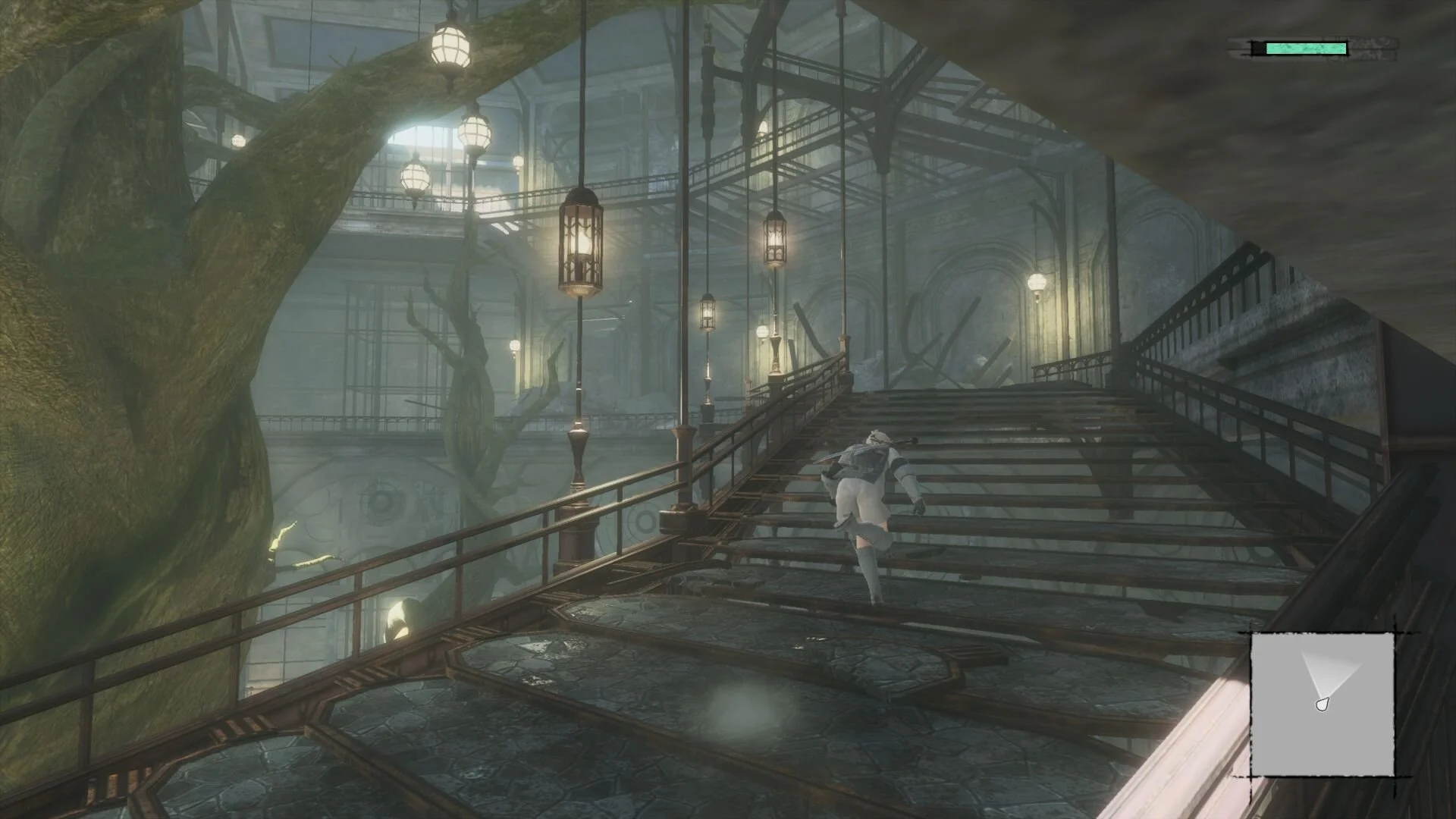“This is the world with the people we cherish..”
Back in 2010, Nier released as two separate games depending on if you lived in or outside of Japan; Nier: Replicant and Nier: Gestalt. One featured a youthful protagonist with his sister, and the other, a gruff father figure tasked with protecting his young daughter. My experience with this version of Nier, albeit incomplete, was through Gestalt, the version that released here on the Xbox 360 and PS3. With the critical and commercial success of Nier: Automata, it was a no-brainer to not only see this remaster/remake happen but that it would adapt solely from the Japanese version with Replicant.
Playing through much of the original, and eventually Nier: Automata, it was abundantly clear that Nier walked so that Automata could run. The seeds of what Automata would become were present, albeit in a far rougher and more stiff series of gameplay and combat encounters. With ver.1.22474487139…, this remaster and partial remake of sorts, all that has changed. While the game doesn’t fully adopt the entire Automata combat system, it borrows enough of its fast and fluid combat so that while it remains true to the original in several respects, it pulls from a great deal of Automata’s speed and agility to make it feel like you remember, rather than what it actually was. After completing Replicant, and all of its endings, I dived back into the original Nier for comparison’s sake, and wow, this new version’s improvements are striking, vastly improving the game ten-fold upon ten-fold.
Despite the noticeable change of protagonists for non-Japanese players, the story in Nier Replicant is essentially unchanged. While some new quests and scenarios have been added, as well as including all the DLC from the original, the fundamental narrative is largely untouched, and this time, all of it is voiced. While many of the core actors are back; some voices, such as those for the lead protagonist, have been recast. Several characters have also seen a slight redesign, making them more on par with the art style of Automata, and since these redesigns are handled by the same man responsible for those in Automata, it should come as no surprise.
Nier: Replicant’s story is largely about the protagonist, Nier, and his sister, who is suffering from a plague called the Black Scrawl that is responsible for a great deal of death in its wake. As her brother, you’ll reach out and attempt to discover its source, and through your journey, you track down Grimoire Weiss, a magical book that might very well hold the answer to your problem. While the core narrative dives into what is left of humanity, and what we do to cling onto it, much of that is in the subtext of the events that follow you and your relationships with several of the game’s central characters. You have Emil, a boy cursed with the ability to turn people to stone with a simple glance, and Kainé, a woman who has a dark past, and a foul mouth to boot.
As you’ll meet a wide range of interesting characters and side quests that further dive deeper into them, it is Emil, Weiss, and Kainé who shine far brighter than anything else in this game, and in some ways, even from what Automata had to offer. Each of these characters has rich backstories, wonderful voice acting, and are developed in ways where you panic to save them when they stumble in fights. The game has some emotional highs, and you’re likely to shed a tear or two when they suffer a great deal of pain or sorrow. While much of it is due to again, the excellent voice acting, a great deal of it is equally due to the careful and deliberate writing as well. That said, while the protagonist himself is a very decent character, he doesn’t quite get the same treatment here, likely because you’re filling in that role yourself and having characters bounce off of you instead. It’s not to say that he lacks depth, but he is certainly the least interesting of the central cast.
Each of these characters will join you throughout much of the game, only disappearing when the story calls for it. It takes a while for Emil to join your party, and his road to becoming a permanent member is met with a great deal of truth, understanding, and emotional turmoil that nearly breaks him. His story is deeply rooted in his past, and his transformation is one of both horror and beauty, making him one of the best characters of this entire series. Kainé, an intersex character who identifies as female, has a very complicated backstory surrounding her childhood trauma and the ridicule and hate that she has endured. It’s made her angry, easy to lash out, but Nier, and especially Emil, soften her to the point where she feels wanted and appreciated, something she never had a chance to feel since her time with her grandmother. Apart from being clad in very revealing lingerie, she also wears wraps of bandages around a single arm and leg, meant to hide the fact that she is partially a shade herself, haunted from within by a voice that beckons for blood and destruction. She’s a vastly interesting character, even if she is designed in a way to invoke how female characters were often designed in video games of the era.
Grimoire Weiss, on the other hand, is recruited very early on and doubles as your ability to perform magical attacks and ranged spells. His insulting wit and pride is often a show, as he comes to respect and love each of the main cast. His insulting banter with Kainé, as he calls her a hussy every chance he can get, becomes almost endearing in many ways, and while he demands that you address him with his full name and title, he softens to the shortened nickname Weiss quite well, even allowing Yonah, Nier’s sister, to call him Weissy a few short times, despite his better judgment. His dialogue with Nier is engaging, often interesting, as they both realize they need to depend on each other if they are not only going to survive but also to track down the cure for Yonah as well.
Part of what makes this story around saving Yonah from the black scrawl so engaging is also through its supporting characters. Fans of Automata will instantly recognize a pair of characters almost immediately, but there are several others that really go a long way to cementing the game’s emotional core. The story surrounding the King of Facade, for example, starts out with a quest where you’ll get attached to a young girl named Fyra, who shows you around their village, and explains their culture and rules system to you. Later on, when you revisit towards the end of your first playthrough, she takes on a bit of a different role, one that contributes to one of the game’s most standout scenes. Each location you visit has at least one character that will resonate with you in some capacity, or at least have built up some sort of relationship with your central cast that when something happens you have that pull on your heartstrings to feel their plight and circumstance.
What I enjoyed a lot about Nier: Automata was not just its fast-paced combat, but its variable gameplay styles that the game would often throw at you. While a large chunk of this game will be handled through your typical third-person camera or that of a side-scrolling platformer, you’ll occasionally have the camera aim down from up high, or two scenarios where you’ll be playing through a Resident Evil inspired fixed camera angle or a take on Final Fantasy VII’s isometric camera from the early moments of that game. These moments are engaging, and while we don’t get as much variation as to what Automata offered, the few that are here are well handled and brief enough where they don’t overstay their welcome.
What does overstay its welcome; however, are the side quests and the backtracking that goes along with many of them. In fact, the game even recognizes this with Weiss commenting “Just once, I would enjoy receiving a quest that can be solved in the general vicinity of the asker…” and Weissy.. so do I. Now, not every quest has you running back and forth but the large majority do, often having you go from place to place, again and again, to simply update the quest giver or you’ll come back only to find they want something else as a follow-up. Replicant has a central hub location that has exits towards each of the few areas the game offers, and while the overall map size isn’t gigantic, having to run back and forth from area to area for a single quest, again and again, is simply something that should have been addressed here in this version upgrade. While there is a travel system eventually unlocked via a boat, it still doesn’t solve much of this backtracking and is often unavailable due to certain aspects of the story, and how it aims to deliver certain cutscenes needed at the village’s gate. With all the additions made to the gameplay, some quality of life enhancements here could have benefitted these quests, making them actually feel worthwhile to do, instead of something that feels like a chore, no matter the outcome.
That said, nearly every side quest is simply a “can you get me this item” fetch quest without much thought put into them. There are a few quests that offer up some real emotional stakes, but they are few and far between and are mostly linked to the main story anyway. Some side quests will also have days or a week transpire, even if that doesn’t make sense in the overall timeline of what you’re doing at the moment. While I completed a large amount of them, I eventually left some unfinished and concentrated on those that granted me rewards needed for pushing through to the additional endings, as the back and forth nature of what they want from you is less than appealing. Honestly, the side quests are Replicant’s only noticeable failings.
The original Nier was a slow-paced affair compared to Automata when it came to its combat. Several skills had you stationary, such as the Dark Lance, and your overall combat speed was lethargic in comparison. It was one of the reasons that I didn’t push further through my time with it, a combat experience that just didn’t feel enjoyable. With the enhancements they’ve made here to make it feel more akin to Automata, all that has changed, offering up the speed and agility needed to make it stand out and become one of the best feeling combat games I’ve played in years. The Dark Lance, the ability I mentioned earlier, can now be charged while jumping through the air, while moving, or even dodging, creating a wealth of new tactics on that ability alone. This new speed and freedom have also resulted in enemies having new moves, animations, and counters, shaking up combat greatly, and fleshing out what these new enhancements mean to gameplay. In short, the combat changes made here have taken a game that was ok to making it simply breathtaking.
Nier has a standard attack, and a more heavy attack, kicking away enemies or jumping down with a big slice. With Weiss, you can wield magical abilities such as demonic-looking hands, a chargeable lance, spinning blades that twirl around you, or blaster fire for a more measured and distanced approach. You can customize which of the top triggers and bumpers do what, even removing your block and dodge should you see fit. I found a balance with the lance, spinning blades, and blaster, with keeping my dodge, that I rarely used the other abilities. I tried them, sure, experimented with what worked and what didn’t, and found my footing with these three skills, cutting into hordes of enemies with very little resistance. I will say that normal difficulty is a tad easy, so certainly bump it up for a bit more challenge. You can also block and parry attacks, but honestly, I rarely had a need to do so.
With your abilities and your weapons, you can outfit them with what are called words. In another sense, and another game, you could simply call this a Materia like system from Final Fantasy 7. Each word you learn can grant that weapon or ability to cause more damage, increase your defense, or earn you more experience or rarer drops. You can also unify your words so each weapon you swap to or skill you wield, will pull from the same words. However; having that variety of words, let me graft a few that could break through shields faster should I used my large two-handed swords, or dealing more overall damage should I use the more nimble and quicker spears. I opted for upgrading and using the Nameless Blade more often than not as its speed and toughness kept me slashing faster and did enough damage where it was almost always in my hand, unless I needed to break some armor down quickly, thus pulling out my Phoenix sword to get the job done. Weapon switching is as quick as pressing left, down, or right on the D-pad, with up being used for your items such as health recovery or buffs to your damage.
New additions to combat allow for better uses of combo attacks, and the new lock-on system feels like something that felt like it existed in the original, but it sadly did not. This allows for the camera to track enemies around you better and keeps you focused on the much larger targets around you. Overall, combat simply feels leagues better. Like I mentioned before, I recently jumped back into the original to grasp that difference for myself, and wow, it is night and day with how the game feels now. Much like the Destroy all Humans! remaster that THQ Nordic recently put out, changing the combat and mobility to how you think you remember it feeling is a very smart play as it not only feels better, the game is infinitely more playable because of it. The team at Toylogic has made some incredibly smart choices on what to address here combat-wise, that it makes me want to replay Automata all over again. (Spoilers, I am..)
Going back to play Nier, it simply wasn’t a great-looking game, even by 2010 standards. Environments lacked detail, and the texture work was awful. Automata has a similar style in some of its simplicity, but it just better showcases the art design in a way that makes it stunning to look at it. While Replicant doesn’t greatly change the look of the original in regards to its geometry and level design, the additional detail and texture work here is a truly impressive feat, putting it almost on par with Automata, and better in some cases. Places such as the Junk Heap, for example, takes a bland flat sand texture and adds additional structures, shadows, and significantly more ground details that it simply is shocking how good this version looks when compared to the original.
Even back in 2010, when the original game launched, the soundtrack was absolutely phenomenal. With ver.1.22474487139…, it’s even better, if that is even possible. Keiichi Okabe, composer for Drakengard 3, Nier, and Nier Automata is back at the helm here, bringing both new and arranged songs to the game. While I adore the soundtrack in Automata, these new additions and arranged pieces are filled with the growth he has had over the years. With the haunting voices and tone of the prologue in Snow in Summer, the pulse-inducing boss music in Deep Crimson Foe, to my recent addiction to listening to Blu-Bird while I write this review, ver 1.22 has a stellar soundtrack that floods the game with incredible emotion and pace. Combine that with incredible performances from Ray Chase (Nier), Zach Aguilar, (Young Nier), Liam O'Brien (Grimoire Weiss), Laura Bailey (Kainé), and Julie Ann Taylor (Emil), who are either new to the series or had come in to re-record both existing and new dialogue, and you have a stunning soundtrack in both music and vocal performance.
Part of why Nier: Automata was so engaging, was the context given to certain characters and villains when pushing through the game’s additional playthroughs. For much of what you’ll do here in Replicant, you won’t simply be playing through the same 15-20 hours, but rather a precise chunk of it that is layered with additional conversations and scenes, fleshing out much of the supporting cast, and that of your main cast as well. Your second and third playthroughs will be a bulk of the same content, and a smart save will make your 4th playthrough much shorter. However; the newly added Route E playthrough eventually branches off its repeated opening hours into something that is so incredibly fun and engaging, that the connections it attempts to make with Automata act as the perfect cherry on top of a truly fantastic experience. My total time for all playthroughs went just under the 40-hour mark, speedrunning the game during moments I had already experienced.
While Nier: Automata is still the better game, its road to what it became started here. The enhancements made to Replicant put it nearly in the same league as its sequel, whereas the original was a far cry from Automata’s greatness. The characters, the story, the stunning soundtrack, and enhanced combat give Replicant the much-needed push to have it stand alongside some of the best action games ever made. Had the game tightened up some side quests and evolved them into being more than just generic fetch quests, then it would easily be one of my favorite games ever. Regardless, this is one action spectacle that is truly worth the revisit, over and over again.
Developer - Toylogic. Publisher - Square Enix. Released - April 23rd, 2021. Available On - Xbox One/Series S/X, PS4/5, Windows. (No next gen version at this time) Rated - (M) Blood, Strong Language, Suggestive Themes, Violence.
Platform Reviewed - Xbox Series X. (No native version available.) Review Access - Nier Replicant ver. 1.22… was purchased by the reviewer.


